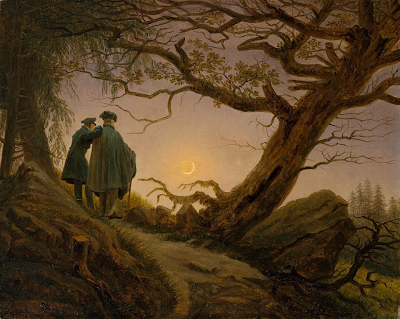Caspar David Friedrich è il pittore tedesco del paesaggio romantico più importante del 19° secolo. Egli è noto per i suoi paesaggi allegorici, che presentano figure contemplative che si stagliano contro cieli notturni, nebbie mattutine, alberi spogli e rovine gotiche.
La visualizzazione e rappresentazione del paesaggio in un modo del tutto nuovo è la chiave dell’innovazione di Friedrich. Non solo ha cercato di esplorare tecniche artistiche per ottenere belle rappresentazioni, come nella concezione classica, ma ha tentato di rappresentare un istante sublime, attraverso la contemplazione della natura. Friedrich è stato determinante per aver trasformato il paesaggio in soggetto d’arte.
Caspar David Friedrich was a 19th-century german romantic landscape.
He is best known for his mid-period allegorical landscapes which typically feature contemplative figures silhouetted against night skies, morning mists, barren trees or Gothic ruins.
He is best known for his mid-period allegorical landscapes which typically feature contemplative figures silhouetted against night skies, morning mists, barren trees or Gothic ruins.
The visualisation and portrayal of landscape in an entirely new manner was Friedrich’s key innovation. He sought not just to explore the blissful enjoyment of a beautiful view, as in the classic conception, but rather to examine an instant of sublimy, a reunion with the spiritual self through the contemplation of nature. Friedrich was instrumental in transforming landscape in art.
 |
| Cimitero del monastero sotto la neve, Klosterfriedhof im Schnee |
 |
| Due uomini davanti alla luna, Zwei Männer in Betrachtung des Mondes |
 |
| Le bianche scogliere di Rügen, Kreidefelsen auf Rügen |
 |
| Tramonto sul mare, Mondaufgang über dem Meer |




